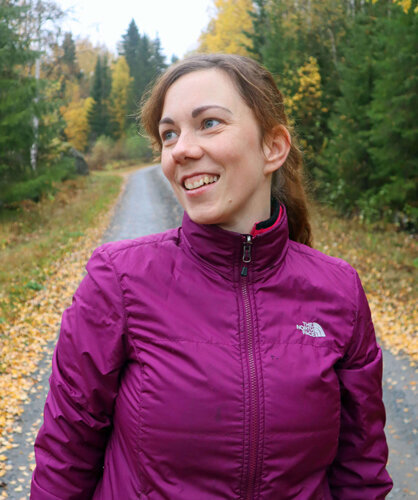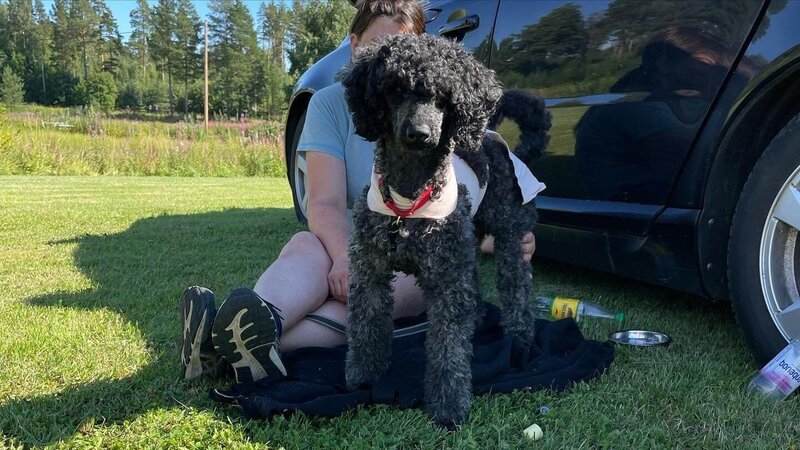Have you ever been on a walk with your reactive dog doing everything right and feeling like your training is finally working, only to have your hopes shattered by someone ignoring your need for space?
“He’s friendly!”, is a common line that many of us has heard as a dog is running towards us. Maybe your dog reacts, and instead of giving you room, the other person walks straight towards you, oblivious or uncaring about your struggles. We’ve all been there.
I once walked an extremely aggressive terrier that had to be walked with a muzzle, and even when I screamed “he will bite your dog” people let their dogs run up to him.
It’s easy to feel angry or frustrated in these moments, and let’s be honest, we all have felt like screaming some bad words! But while it’s natural to feel that way, focusing on others’ behaviour isn’t productive for you or your dog. In this post, we’ll explore why letting go of that frustration is key and focus on what you can control to set both you and your dog up for success. You will also get hands-on tools that you can start practising today.
Why Anger Won’t Help You or Your Dog
Frustration and anger are normal emotions, but chronic stress can raise cortisol levels, impairing decision-making and leaving you feeling drained. We have already talked about the issues with having a full stress cup for your dog, but the same is true for you! Similarly, your dog is highly attuned to your emotions, and your stress can increase their stress, creating a cycle of reactivity that’s hard to break. Instead of holding onto frustration, it’s important to shift your mindset. Remember, you can’t control others’ actions, but you can control how you respond. This mental shift not only reduces your own stress but also helps your dog feel more secure in challenging situations.
Focus on what you can control
When we focus on what’s within our control, we feel more empowered. Here are some actionable steps you can take to make walks less stressful:
Choose calmer environments to walk in (if you can)
Opt for quieter paths or times of day when you won’t run in to as many other dogs. This reduces the likelihood of encountering difficult people.
Be prepared
Bring high-value treats that you can use with your dog or any loose dogs coming towards you. You can also bring a ball to throw to the dog, so it’ll hopefully start chasing that instead.
Have options
Practice a U-turn with your dog so you can turn around at any point and walk the other way. Teach your dog a verbal cue like ‘this way’ while gently guiding them in a different direction. Practise in low-stress environments first. If your dog is small enough, it’s completely OK to pick him/her up.
Manage your body language
Dogs read subtle cues in your posture and tone. Keeping a relaxed posture and using a calm voice can help your dog feel more secure. Focus 100% on your dog and don’t even look at the other person. They will get the hint, and you will help your dog more than lashing out.
Have some sentences ready
They might not work, but you never know. I have learned, as I mentioned earlier, that saying your dog is aggressive almost never helps. However, I found that saying your dog is sick and contagious is a better deterrent. However, if you are uncomfortable with this, just be honest and say “my dog is struggling with other dogs can you give us some space please?”.
What to Do When Frustration Creeps In
Despite your best efforts, there will be days when frustration takes over. That’s okay—it’s human! When it happens, try these steps to regain your balance:
- Acknowledge Your Feelings: Remind yourself it’s normal to feel this way.
- Reflect on the Situation: Instead of focusing on the other person’s behaviour, ask yourself, “What can I do differently next time to reduce stress for me and my dog?”
- Practice Self-Compassion: You’re doing your best in a tough situation, and that’s enough.
Practising this mindfulness and self-compassion can reduce stress and improve emotional resilience, making these strategies a win-win for both you and your dog. The more you practise, the more resilient you become.
Summary
You can’t control how other people act, but you can control how you respond and prepare for challenges. By focusing on what’s within your power—like your route, tools, and mindset—you’ll set both yourself and your dog up for calmer, more enjoyable walks.
The next time someone crosses your path and frustrates you, try to let it go. Shift your focus to the positives: what you’re learning, how your dog is progressing, and how you’re both growing together. You’ve got this!
Remember, every walk is an opportunity for growth—for both you and your dog. With the right mindset and tools, you can face challenges with confidence and turn struggles into successes.
Want to learn more?
Check out my 3 tips for a calmer walk in your local area in HERE.
Also, check out more mindset tips for reactive dog owners HERE.















+ show Comments
- Hide Comments
add a comment